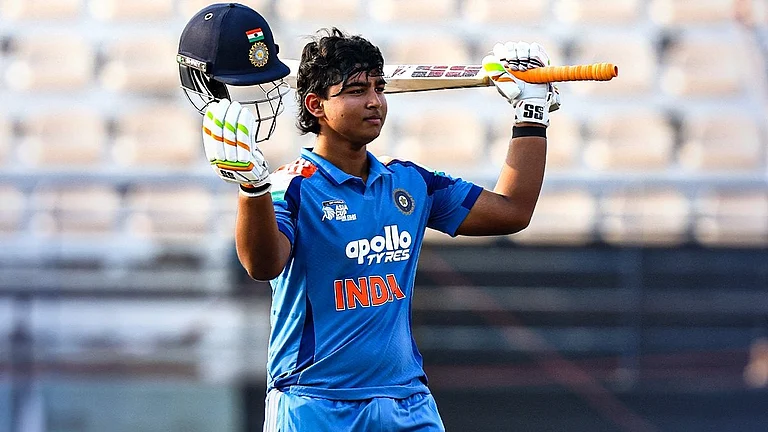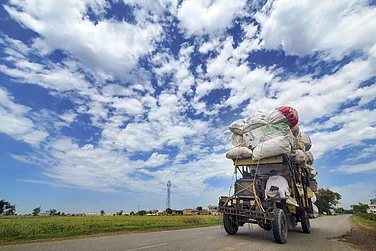April, 2017. Our planned route was to the 'Skeleton Coast' in the north of Namibia in West Africa, the driest region of the world as the place does not have any rain fall. Wild, wet, rocky, sandy, where two oceans of sand and briny water meet together, in the name of Primitive Namib Desert and Atlantic Ocean.
Here in uncultivated barren land the antique Damara tribe has settled. A road is extended to Damara land. The seal colony is hundred and ten kilometres north of Cape Cross at the Ugabmunde entry-gate. No one can go there at his own wish and convenience. The gates are open from one to three in the noon time for a couple of hours only. Government permission is required to enter in this unfrequented place. There are no burden of tourists. Skeleton Coast is littered with human and animal skeletons. Our caravan headed for 'Hentis-Bay', the ghostly coast of the South Atlantic, through the barren desert.
'Trans Africa Overland' travel label was affixed to the caravan. I was part of that traveling desert team. The goal was to reach the gate of Death Valley timely. Uneven road was covered with pebbles. Arteriovenous minor pathways passed through desolate desert. Direction was determined by signposts. The golden sandy sea that spanned to the sky was a mirage of its own accord in the illusion of vision.
The blue horizon was becoming the blue ocean before the eyes in illusory existence. I was baffled by hoax of nature and was restless to reach the place. Sea-coast of Namibia had swallowed thousands of small ships over the centuries. Several fishing trawlers had been trapped in sand dunes in the sea. The shark-nibbled decaying body of unfortunate seafarers had washed ashore, had been buried in a hauntingly beautiful yet terrifying seabed.
All the skeletons were chalky white being sunburnt. Scattered bones of whales and seals were being digested in sand ovens. There are Kunene river in the south of Angola and Swakop river in the north of Namibia. The middle part of the two river estuaries is occupied by the Skeleton Coast or Namib Desert coastline. Hunter-gatherer nomadic bushmen have inhabited in the southern part of Africa. Wandering nomads think that this heaven-forbidden land sis created by the severe displeasure of God. Waves of ocean water are blown by the opposite currents and winds. An ionic-wind ring, 'Benguela', is formed in the South Atlantic.
Fast-flowing ice-cold south-easterly winds combined with hot desert furnaces to form dense fog. The name is Cassimbo. As a result the plains adjacent to the desert become obscured by foggy gloom. There are dangerous reefs on the sea floor. Somewhere else the sand has infiltrated the sea.
The combined factors have repeatedly led to shipwrecks. The coast is damp so the landscape of the Skeleton Coast is divergent. Before crossing Hentis Bay a diminutive ship came into view, close to the coast stuck in the sand. It was a veritable symbol of ruin. My excitement was rising. Total scenario seemed as if decades ago the ship was struggling to anchor on some desert island in the palm tree infested sea-shore. A typical replica of a Hollywood movie. There were no roads suitable for big caravans, so we had to walk the rest of the way. It was understood that the sailor was confused without getting any clue how to get rid of the entanglement. The name of the ship is 'Jeila'. The owner was 'Hangana Sea Food' from Cape Town, South Africa. Their business was sea fishing. Lately an Indian bought the old ship at the price of scrap metal for profit. The fateful ship at risk sailed to Bombay with two sailors on board. The sea became rough with a sudden gust of wind.
The ship, cut off from a certain waterway caught at spinning in sea water, but continued to drift. The anchored rope slipped as it hit the rock under the water. The vessel was tossed up by the waves, completely shattered inside. There was nothing left but the exterior shell. Without the sailor's control, the hull of the ship as it shook in the current floated at the mercy of God. It was pitch dark and the sailors were disoriented. There was no hope of survival. A feeling of sinking in the abyss engulfed them. Subsequently, fate was twisted into destiny. The only survival tools they had, were walkie-talkies and life jackets.
Drinking water, food all vanished. Ship was drifting headlong got stuck in sandbanks on the coast. Defeated in the crusade, the sailors braved the storm to get out the danger of shipwreck, but could not. Fate smiled on them as they came to the attention of fishermen on the coast in the morning light. Fishermen, the agent of God, saved them in shuddering condition. That day was August 25, 2008. The name of the place is 'Ale Aale'. Fourteen kilometres south of Hentis-bay. Shipwrecks site are now the world's adventure photographers' favourite
haunts.
Abandoned ship half buried in the surfing ocean now has a family of three species of cormorants. Seagulls come as a guest in the sanctuary of feathered creatures. Skeleton Coast is surrounded by fascinating history. Despite the murderous environment, the region rich in astonishing wildlife, continues to attract undaunted tourists. I had seen oryx, kudu, zebra who were looking for life on the ground.
How do they survive in this rough land? Elephants, lions, hyenas, baboons, adapted to the desert climate, were however obscured at that time. The scream of a lonely seagull and the ghostly cry of a victim of enigmatic shipwreck, mingling together, Skeleton Coast is an opening page of a strange story. It has an irresistible charm, impossible to ignore from making a visit.
(Pijush Roychowdhury is a Glob-trotter who frequented sixty-three countries. His travelogues have been published in renowned publications. He is an awardee of 'KALOM' as the best travelogue writer in the year 2020.
Boudhayan Mukherjee, a bilingual poet, author, and translator started as a student editor and literary secretary at Visva Bharati university. He was awarded Swamagata Literary Prize in 2022).


























